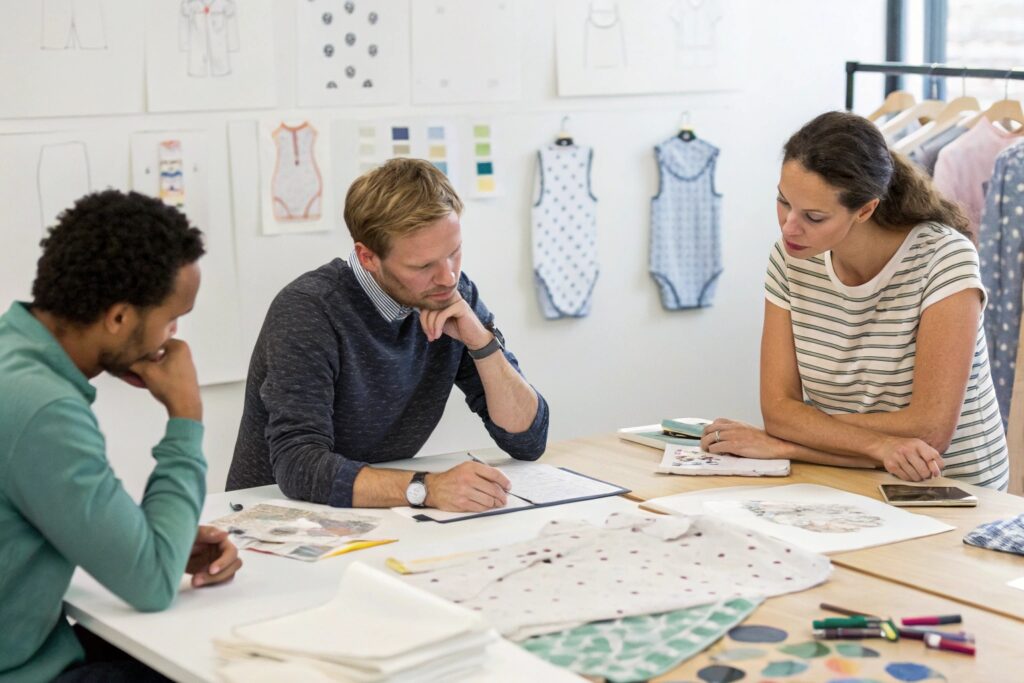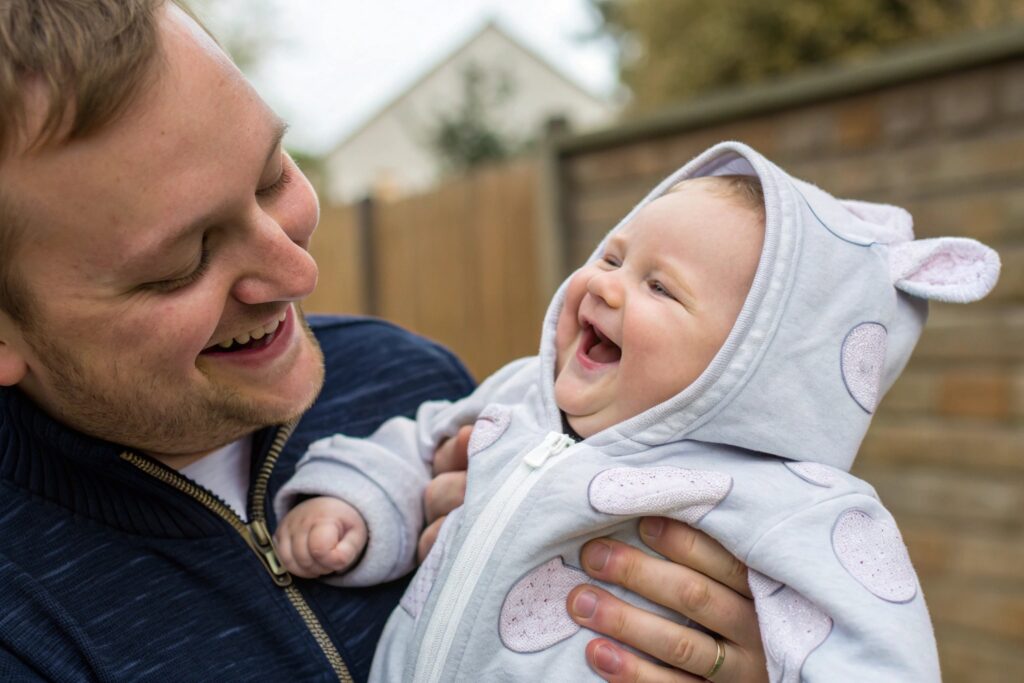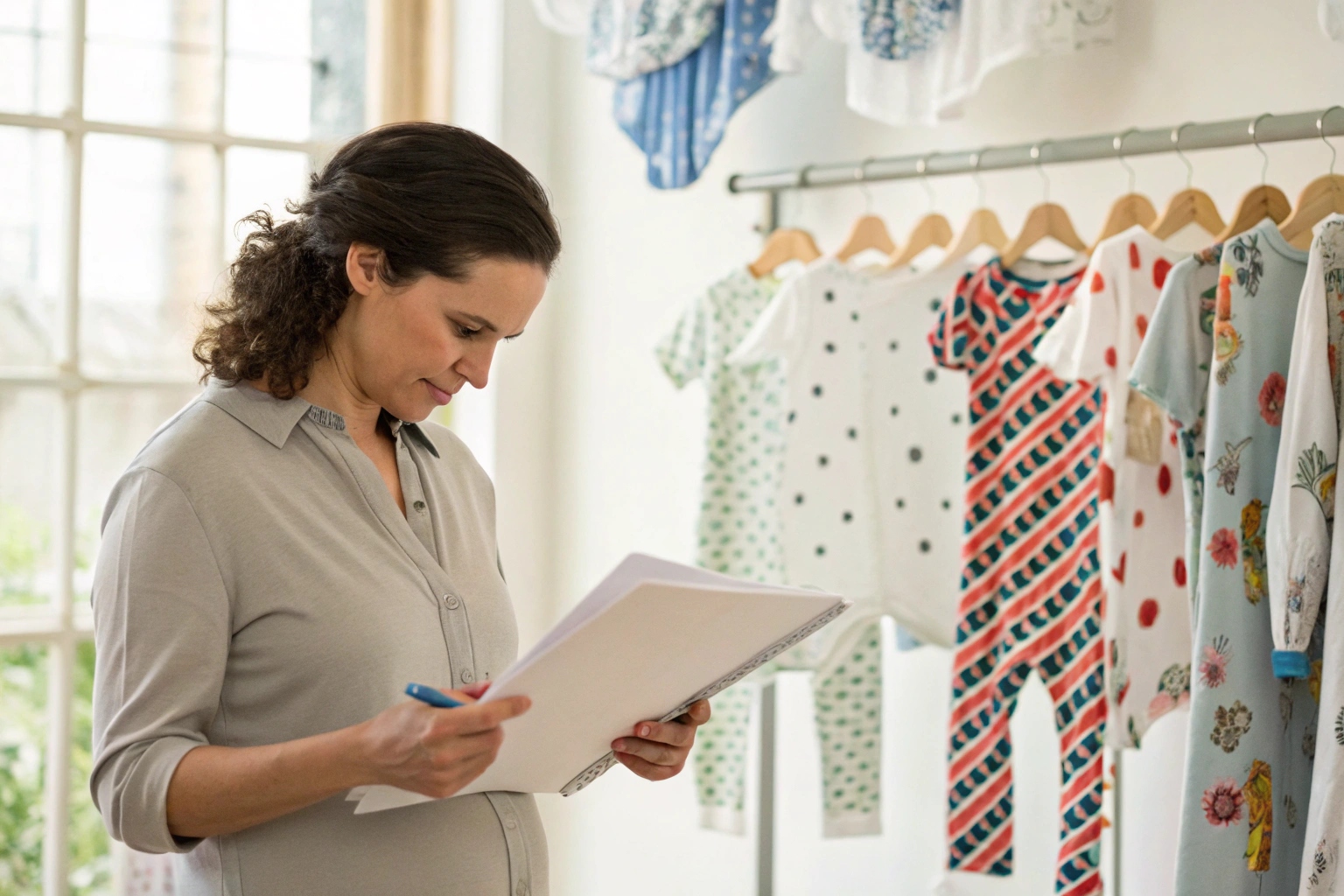Today’s babywear market is crowded. Every brand is fighting for attention. So how do new and growing baby brands stand out?
More baby brands are investing in custom collections to create exclusive designs, build brand identity, and drive emotional connections with modern parents.
In this article, I’ll break down why customization is no longer a luxury—it’s a strategy. And how we’ve helped brands scale custom babywear, without sacrificing speed or quality.
How Custom Collections Help Baby Brands Stand Out?
Every retail shelf and e-commerce platform is filled with similar styles. If your brand looks like everyone else, you’ll quickly fade away.
Custom babywear helps brands stand out by offering unique designs, storytelling elements, and better brand recall in a highly competitive market.

What design elements in custom babywear help a brand become memorable in the eyes of parents?
Here are some ways custom collections create standout value:
- Signature prints: hand-drawn animals, names, or milestone themes
- Coordinated sets: matching rompers, bibs, hats, and blankets
- Exclusive fabrics: bamboo blends, textured cotton, or fleece-lining
- Custom trims: wooden buttons, delicate lace, printed linings
- Color identity: using brand-specific pastel or bold palettes
I’ve seen brands go from basic to bestseller by simply shifting from stock styles to signature collections. One client used soft hand-painted watercolor prints across three pieces—and their followers on Instagram tripled within two weeks.
How does branding through design boost loyalty and price perception?
When parents see a clear visual identity—colors, fabrics, details—they remember your brand. It’s no longer just a romper, it’s your brand’s romper.
For example, Fumao helped a European brand create seasonal collections with matching muslin wraps and rompers. They charged 25% more per set, and customers still came back for more. Why? Because they were buying the story, not just the clothing.
Why Personalization Drives Sales in Infant Apparel?
Most parents want more than just “cute.” They want clothes that reflect moments, identity, and values. That’s where personalization comes in.
Personalized babywear sells better because it connects emotionally, creates keepsake value, and encourages word-of-mouth marketing among modern parents.

How do personalized baby garments trigger emotional buying and increase word-of-mouth?
These are more than clothes—they’re memories in fabric:
- “Welcome to the world, Olivia” printed on the chest
- “Born in 2025” footed pajamas
- Baby’s initials embroidered on a blanket corner
I’ve worked with brands that launched “Name Me” collections—parents typed their baby’s name online, and we printed it on bodysuits. Return rates dropped, and customer photos flooded their Instagram within days of delivery.
This type of customization turns every order into a personal story. Parents share it. Friends comment. And new customers arrive.
What product categories benefit most from personalization in babywear?
Here are some bestsellers we’ve produced at Fumao:
| Product Type | Customization Ideas |
|---|---|
| Onesies | Printed names or milestone messages |
| Bibs | Embroidered initials or nicknames |
| Swaddles | Custom birth date patterns |
| Gift sets | Personalized tags and branded packaging |
| Beanies | Baby’s first name in soft embroidery |
These items aren’t just products—they’re gifts, keepsakes, and brand magnets. A well-personalized bib can do more for your brand than a paid ad.
What Baby Brands Gain from Exclusive Designs?
It’s not just about looking good. Exclusive designs unlock pricing power, repeat orders, and stronger brand protection.
By creating exclusive babywear designs, brands gain ownership of their style, protect against duplication, and increase perceived value.

How do exclusive babywear collections create long-term value for small and mid-size brands?
Here’s what exclusive design brings to the table:
- IP ownership – Your patterns can’t be copied or resold by suppliers
- Seasonal launch power – Custom prints give structure to your drops
- Resale value – Limited-run styles sell faster and avoid markdowns
- Influencer partnerships – Unique designs are easier to promote
- Cross-product branding – Extend prints into blankets, accessories, etc.
At Fumao, we never reuse a client’s artwork with anyone else. That trust leads to long-term deals. One of our U.S. partners now sells only 3 styles per season—but every unit sells out, because parents know it won’t come back.
What role do exclusives play in B2B wholesale babywear sales?
If you’re selling to retailers, exclusive styles are even more important.
Buyers want:
- SKUs they can’t find elsewhere
- Styles tailored to their local market
- Guarantee that competitors won’t offer the same product
We offer white-label programs with fabric development, design lock, and region-specific license agreements. Some buyers even request local cultural prints—for example, Scandinavian forest animals or Celtic icons. That’s how exclusive design becomes a selling tool.
How to Scale Custom Babywear Without Losing Quality?
Custom sounds great—but what happens when you grow? Will you still meet lead times? Will quality suffer?
To scale custom babywear production, standardize base processes, use digital tools, and work with factories experienced in mass personalization.

What production methods allow custom babywear designs to be made in large volumes?
Here’s how we keep quality and efficiency balanced:
| Production Step | Scalable Solution |
|---|---|
| Pattern making | CAD software + digital grading |
| Fabric printing | Digital print + heat transfer |
| Branding | Pre-printed labels + barcode tags |
| Custom packaging | Modular box systems with sticker inserts |
| Packing & inspection | Batch-sorted QC + barcode scanning |
At Fumao, we divide production into modules. That means your rompers, bibs, and beanies go through specific stations—cutting, sewing, printing, finishing—each one optimized for flexibility.
We can print 10,000 rompers with five name versions, pack them in 3 box designs, and ship via DDP—all without delay.
How can babywear brands maintain consistency as they expand customized offerings?
Brand growth brings pressure. These steps help manage it:
- Lock your design templates (Pantone colors, print placements)
- Use approved factory samples as the benchmark
- Set up a production calendar and avoid last-minute requests
- Audit packaging and labeling at pre-shipment
- Track orders with real-time updates (we offer that)
I’ve seen brands collapse under their own complexity. But with the right process, it’s smooth. One client scaled from 1,000 to 30,000 units in 12 months—without losing a single client to quality complaints.
Conclusion
Custom babywear isn’t a trend—it’s the new way to win trust, tell stories, and grow fast. Baby brands that invest in exclusive, meaningful designs will lead the future of this market.










